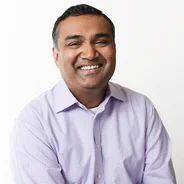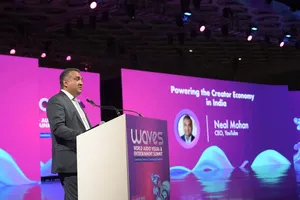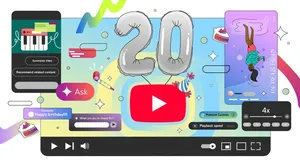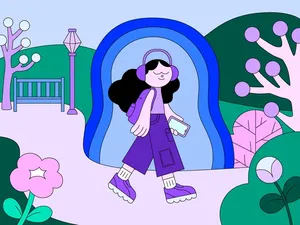YouTube’s principled approach for children and teenagers
Children and teenagers today can access a world of possibilities on YouTube. Whether it’s exploring important topics around the world or looking up a video to help with algebra homework, they’ve never known a reality without this world at their fingertips. And as they’ve grown up, so has the internet. Conversations are taking place around dinner tables and at the highest levels of governments about how to help young people to thrive and be safer online.
As the leader of YouTube and a father of three, I believe it’s crucial we create a healthy experience for young people of all ages. Over the years, we’ve built a robust set of policies and services that protect our entire community and connect people to trusted sources, from combating the promotion of eating disorders and suicide to guarding against dangerous challenges. YouTube Kids and our supervised experiences for older children offer different libraries of content for different levels of maturity, and give families extensive tools to manage their children’s screen time. Built in partnership with child development experts, these experiences reach more than 100 million active logged-in and logged-out viewers every month. And we offer a range of protections for anyone under 18, from take a break and bedtime reminders to age-restricting content inappropriate for younger viewers. And our work on further safeguards across our platforms continues.
Families everywhere deserve the same safe, high-quality experience online, no matter where they live. And all children and teenagers ought to have the same access to the opportunities the internet provides. As young people continuously evolve the way they show up online, so will our services and policies. Today, I’m sharing the five core principles that we will adhere to in our work at YouTube. But we can’t do it alone. That’s why we support policymakers, families, researchers, companies and experts coming together to define a set of consistent standards for companies serving young people online.
Principle #1: The privacy, physical safety, mental health, and wellbeing of children and teenagers require special protections online.
We aim to build great experiences for young people, which is why their privacy, safety, wellbeing and mental health is at the core of our service and policy development. We want our services and policies to better reflect how young people actually use YouTube. For example, we explicitly prohibit cyberbullying or sexualizing young people, and are improving how we identify early signals of this bad behavior to prevent it on YouTube.
Principle #2: Parents and caregivers play an important role in setting the rules for their family's online experiences, particularly for the youngest children.
From setting clear screen time boundaries to teaching their children and teenagers to make responsible choices online, parents and caregivers can deeply influence young people’s behavior. We at YouTube are also committed to doing our part to empower families. One area of focus will be exploring different models of supervision for teenagers, building on our existing family controls.
Principle #3: All children deserve free access to high-quality and age appropriate content that meets their individual interests and needs.
It’s not enough for young people to safely view videos that suit their age — we want them to watch content that enriches their lives and sparks their imagination. We’ll continue to partner with top experts in areas like child development, digital learning and citizenship to expand our work. And we’ll build on our guidelines around high-quality content for children to better meet the needs of teenagers.
Of course, quality content doesn’t do much good if it’s not affordable for everyone to access. Advertising allows us to offer each child the same wealth of content, no matter how much money their families do or don’t have. And on YouTube Kids and for anyone under 18 on YouTube, we do not and will not serve personalized ads.
Principle #4: The developmental needs of children differ greatly from those of teenagers and should be reflected in their online experiences.
As teenagers build independence, find identity and look for community, they need the freedom to explore a broader range of important content and form connections that bring understanding and acceptance. And for this generation, content doesn’t stop at viewing — they’re posting, commenting, and engaging. But teenage brains are still developing and work differently than adult brains, particularly when it comes to decision-making or self-regulating.
We’ll explore a range of solutions across YouTube’s services and policies to keep up with the quickly evolving online habits of teenagers. This includes providing more healthy friction for in-the-moment learnings — from "take a break" interstitials when watching content, to civility reminders and prompts to not share private information when creating videos.
Principle #5: With appropriate safeguards, innovative technologies can benefit children and teenagers.
Whether it’s the latest device or exciting new generative AI tools, today’s young people are eager to test and adapt to technological innovation. From wellbeing guardrails to automated learning tools, we’ll incorporate our Youth Principles in the development and use of new technologies. And we’ll continue looking at the ways we can collaborate with experts across the industry to identify actions we can take together, as research on how the internet impacts young people continues to evolve.
A consistent standard for children and teenagers
Policymakers around the world are understandably focused on the safety of children and teenagers online. We need a clear regulatory blueprint for the policies and services needed from websites and platforms across the internet. This could include requiring companies to provide parents and teenagers with comprehensive privacy controls, to develop tools that further mental health and wellbeing, and to publish information about their content policies and settings that young people can understand.
This work should be built on a nuanced understanding of how the online behavior of young people changes as they grow older. This is why we need a consistent standard — one that tailors protections to the age of the child, nurtures mental health and wellbeing, tackles different risks with proportional responses and gives space for the next wave of technological innovations. We’ve shared more detail on how we’re thinking about this across Google and YouTube here, building on Google’s work to protect, respect, and empower today’s young people. With clear safeguards and industry standards, together we can make sure the internet continues to be a powerful force for good for generations to come.






